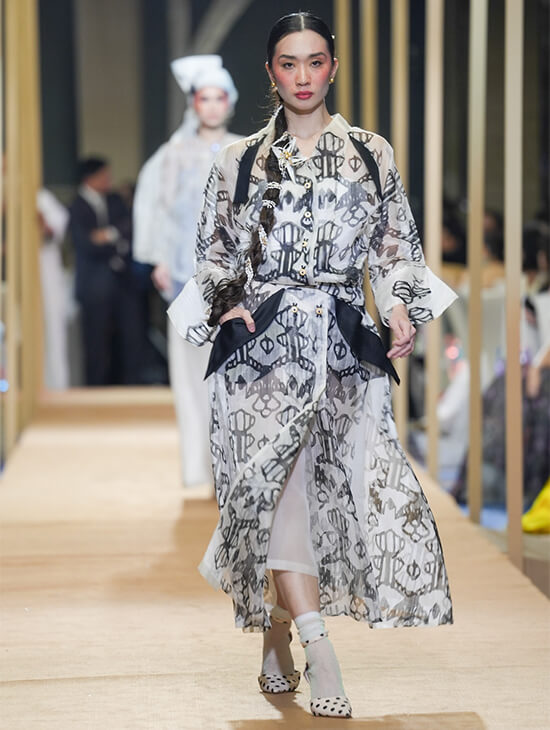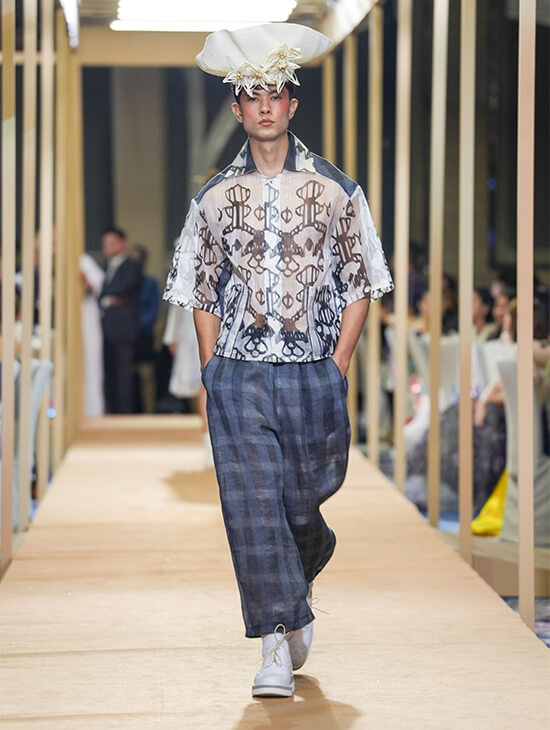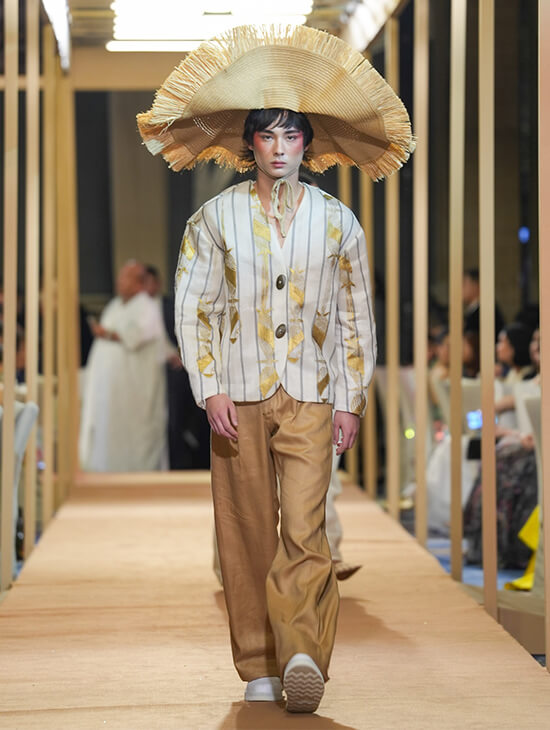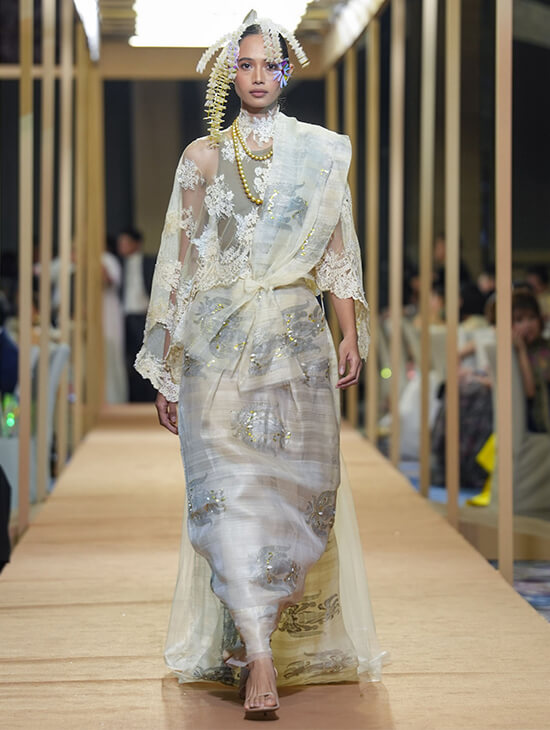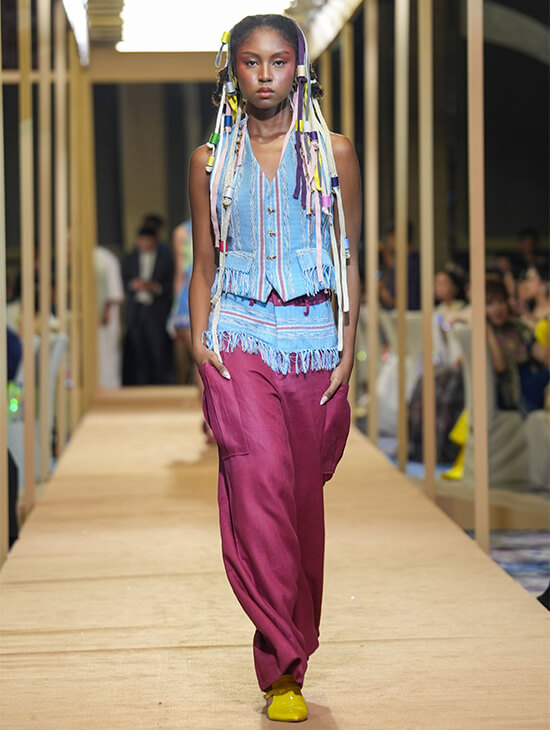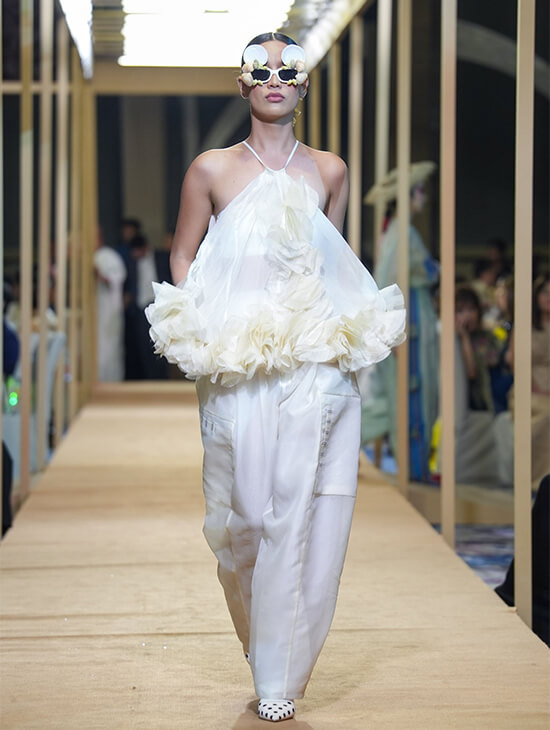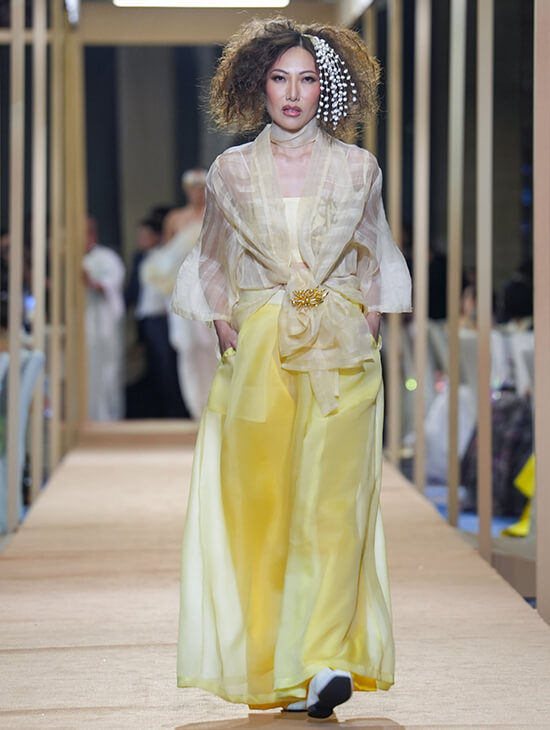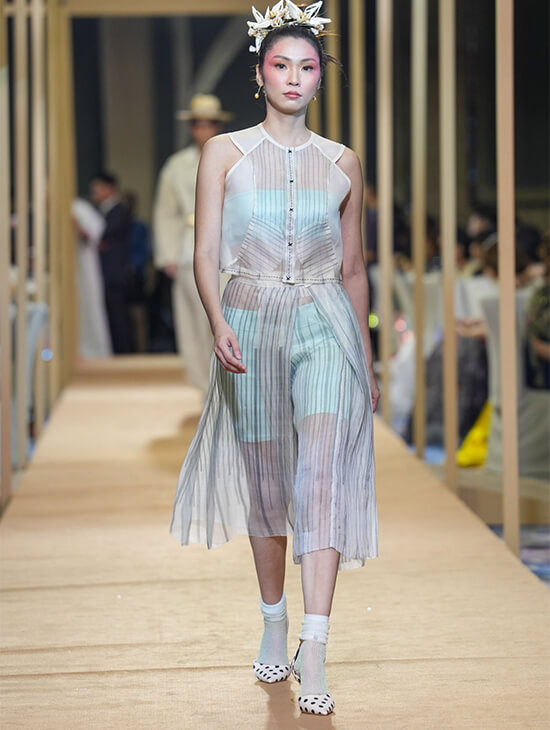Lulu Tan-Gan’s artisanal luxury at the Red Charity Gala
Entering the ballroom for the Red Charity Gala featuring the fashion collection of Lulu Tan-Gan, we knew this 13th edition was going to be extra special.
Surrounding the ballroom, forming a courtyard at the center, were colonnaded ramps with entablatures of woodblock prints by Leonardo Aguinaldo, the designer’s favorite Baguio artist. The scenography by Gino Gonzales set the tone for the presentation of Lulu, who has always drawn inspiration from our indigenous cultures and championed Filipino artisanal crafts and weaves.
“Gino, our CCP Gawad Para Sa Sining awardee, understands my vision for a salon show, with stunning sets featuring a low catwalk that complemented the atmosphere I aimed to achieve. The layout was a brilliant idea with all the RCG patrons close to the ramp. What genius!” Lulu enthused.

Another CCP Gawad awardee, Monino Duque, designed the lighting, making the prints glow while flattering the models and the clothes. The collaboration of three esteemed artists was only fitting for a collection that highlighted the precious piña fabric that Lulu has been developing with her “farm to fashion” philosophy which informs this show titled Crafting Fashion.

She has always had a passion for craft ever since we met her in the late 1970s when she started her hand-loomed knitwear that we snapped up for their sporty elán that went from day to night and traveled well. It was so successful that she was chosen by CITEM as one of the designers sent for Fashion Week in Paris where we spent time together with her imbibing the art de vivre of a city that would serve as inspiration to this day. It was probably this shared fondness that made Isabelle Antena’s song, The French Riviera, keep playing in our minds as the show started, bringing a breezy feeling as soft, chic pieces in exquisitely embroidered and woodblock-stamped piña matched with linen, silk and lace, paraded in caftans, boleros, capes, coats, dresses, and gowns. A sophisticated, cosmopolitan vibe runs through every piece that has a fluidity and femininity that would be right at home in Paris or anywhere in the world. The “easiness” of the pieces, however, belie all the hard work entailed to produce them.

“To bring this collection to life, I first needed to source enough indigenous materials,” related Lulu. “The hand-weaving process for piña is incredibly time-consuming (from scraping the pineapple leaves for the finest fibers to knotting, spooling and weaving them), but thanks to my year-round commitment to this craft, I’ve been able to build up a substantial collection of fabrics.”
Dyeing them is another story. To keep it natural and sustainable, only dyes from the farm are used, jumpstarted by a workshop that the designer led for students at the Zobel School in Calatagan where Patty Araneta of Mahalina Foundation shared her “farm to table” projects.

There, she realized “how indigenous materials like piña are as rooted in the land as the luyang dilaw we use for dyeing.” This native ginger created the loveliest colors, from mango to yellow gold; while sapang wood produced blush to violet; and indigo brought blues and blacks.
Just as she dyes the fabrics herself to get the right shade, she also does the cutting where the design evolves as she lays out the pattern, mindful of ensuring that not an inch of the weave is wasted: “I have always been sustainable and a hoarder. The fluffy top of Tessa Prieto (co-founder of RCG together with Kaye Tinga), as well as the fluffy tops and cargo pants on stage are retasos much older than the models.“

Piña has an ethereal beauty that is showcased the way Lulu does it, layered over bandeaus, shorts, and lace chemises or overlapped in crisscrossing stripes, but still translucent.
For touches of shine, she gave weavers some of her silver and gold threads for accents. She also added block-printed patterns of Kalinga, Mandaya, and T’Boli woodcarving motifs as part of her inspiration to bridge Luzon, Visayas, and Mindanao. Fringed aqua weaves that Lulu commissioned in placemat sizes by the Tublay community in Benguet were used for a waistcoat and trims on trousers. Visayan red seeds anchor the smocking of a skirt, piña petals add frisson to a halter top.

Contrasts provided counterpoint: Boyfriend suits have Kalinga print pockets and delicately beaded French lace peeping out of hems, structured coat tail jackets are softened with floral embroidery or matched with pleated halter dresses.
Accessories like shell eyewear, sculptural necklaces, and vibrant footwear punctuated the looks, as styled by Noel Manapat who also did the pegs for hair and makeup executed by Henri Calayag, Eric Maningat and team who did a wonderful job to complement the clothes, “bringing an ingenious and contemporary touch to ensure it remains upbeat, hip and youthful.” Lulu also appreciated Noel’s “magical touch” for the formal pieces where the jewelry of Jewelmer completed the ensembles.

The show was well-paced, thanks to Robby Carmona, who the designer credits as “another expert in the field, directing it with impeccable timing,” to music tracked by Melvin Mojica and Tarsius Manila.
“I’m fortunate to have this great team with the same mindset. They understand my design philosophy and we share the same definition of luxury.”

Luxury was, indeed, most evident in the show, as defined by Lulu who always values “natural, understated refinement and quiet confidence, transcending trends and ostentation to focus on the inherent beauty of materials and craftsmanship, embracing simplicity and authenticity.”
Proof that her pieces are trend-proof was the inclusion of four archival pieces from 2003 to 2018 that look as fresh and wearable today.
It has been a long journey for the designer. After 20 years in knitwear, she had to ask, “What makes me a Filipino designer?” She saw her path leading to piña which had a stiff and stuffy reputation but Lulu persevered to make it more desirable: “By understanding weaknesses, we often discover solutions which can lead to real innovation.” Through her designs and treatments, making it softer and more fluid to have more versatile applications, she achieved what she set out to do: “Transform our traditional textile into a symbol of elegance, innovation, and timeless sophistication—crafted for the modern fashion connoisseur who values both heritage and cutting-edge design. Tradition thrives, after all, when it evolves through contemporary participation. Adding that fashion-forward factor keeps tradition alive, relevant, and continuously inspiring.”


